This small archive—from the estate of J.D. Coker, who served in the U.S. Navy on the US Strategic Bombing Survey Ships' Bombardment section, and who later became a leading official in the U.S. Atomic Preparedness programs (such as the President's Committee on Emergency Preparedness)—are mimeographs and manuscripts that comprise what seems to be the summary of the Navy's bombardment of Kamaishi, Muroran, Hitachi, Kushimoto, Shimizu, Hakodate, Nojima, Saki, and Hamamatsu. This was about the extent of the Allied naval bombardments against Japan, as it was not possible for battleships to maneuver close enough to the Japanese homeland to fire against industrial and production centers. (It may have also been the case that the aircraft used to protect the assaulting ships could have perhaps done as much damage to the targets as the ships themselves.) $1750
Ships Bombardment Surveys Original, Confidential Material
Group of 14 documents of 63 leaves concerning the bombing surveys at Hamamatsu, Hitachi, Kamaishi, Hakodate, Kushimoto, Nojima Saki (Japan) in 1945. Includes the following sections:
(1) “Memo from the Chairman”
Marked CONFIDENTIAL.
“Preliminary Summary of report on Ships' Bombardment Survey Party.”
8vo, 7pp, carbon typescript on onion skin paper, heavily annotated and corrected in pencil.
By N.A. Chapin, Capt., USN.
This detailed report reviews the damage done to the areas under bombardment including Kamaishi, Hamamatsu, Hitachi, Muroran, Shimizu, Shionomisaki, Nojima Saki
"Primary task of units attacking first four objectives was bombardment, and principal components of these Task Units in general were fast battleships and heavy cruisers. Attacks on the last three were secondary tasks during anti-shipping sweeps ... .In general the mission assigned by commander Third Fleet was to bombard certain vital areas of Japanese Mainland in order to destroy vital industries and demoralize transportation, and lower will to resist of Japanese people".
(2) ”Ships' Bombardment Survey Party, Order of Publication of Reports”
8vo, 18pp, carbon typescripts on onion skin paper. Outlines this segment of the survey and provides statement on the distribution of bombing data, how reports are to be made, structure of reports. For example, for “Japan Iron Works” in Kamaishi the order of report should be the decription of target (functional and physical), followed by analysis of damage (physical, funcitonal, fall of shot and general damage plot, photos of Japan Iron Works and machinery; building and machinery layouts; tablesof production. This is the general outline and does NOT include the actual data, though it does outline about three dozen target areas. (Dated as revised in December 1945.)
-
2a-3f are all ship-board mimeographic reports, staple bound, of the six target areas outlined above.
(2a) ”Ships' Bombardment Party. Field Memo No. 1. U.S.S. Haines, at Sea, 2 October 1945.”
Marked CONFIDENTIAL. 3pp.
Data recorded summary includes, for example:
Kamaishi area.
Target: Japan Iron Works. Invloving the ships USS Indiana, South Dakota, Massachusetts, using 16” guns, delivering 802 rounds on 14 July 1945.
(2b) “Ships' Bombardment Party/. Field Memorandum No.2 U.S.S. Haines, at Sea 7 October 1945”
Includes data on Nihon Steel Works and Wanishi Iron Works under bombardment by USS Missouri, Iowa Wisconsin, all 16^, delivering 434 rounds. Also provides coordinates for target areas. 2pp.
(2c) “Ships' Bombardment Party/Confidential/ Field Memorandum No.3 U.S.S. Haines, at Sea, 16 October 1945.”
CONFIDENTIAL.
Objectives/bomb targets: RADAR Installation (Iso Saki), Hitachi Steel Works. Hitachi Arms Factory, and several others.
The battleships involved include North Carolina, Alabama, Wisconsin, Missouri, Iowa (all 16”), plus Atlanta and Dayton (6”).
(2d) ”Ships' Bombardment Party/ Field Memorandum No.4. U.S.S. Haines, at Sea, 3 Novmber 1945”
CONFIDENTIAL. Offset printed. 3pp.
Kushimoto area (seaplane base, airfield, urban area, radio station). Targets distributed among the 5” and 6” guns of the USS Pasadena, Springfield, Astoria, Wilkes Barre, Wedderburn, Twining, Stockham, Uhlmann, Cushing, Colahan, Benham.
(2e) “Ships' Bombardment Party, Field Memo No.5 U.S.S. Haines, at Sea; 6 November, 1945”. Offset printed.2pp.
Shimizu area (metal alumina plant, oil refinery, railroad area, urban area). Targets were bombarded by the USS McKee, Murray, Rodgers, Harrison, Ringold, Schroeder, Dashiell, with 1063 rounds.
(2f) ”Ships' Bombardment Party, Field Memo No. 6 U.S.S. Haines, at Sea, 6 November 1945”. 3pp. Offset printed. Hamamatsu area; (Japan Musical Company (?), railroad station, military barracks, railway, loom works, tool works, and more). Bombardment data from the USS Massachusetts, Indiana, South Dakota, all 16”; plus the Chicago, St. Paul, Boston, Quincy, all at 8”, laying in about 1200 rounds.
( 3) “Economic Effects of Incendiary Attack of 19 July 1945 on Hitachi Urban Area.” 16pp. Typewritten carbon sheets. Discusses damage done to the Hitachi works as wells to the civilian population (in an attack that killed 700). Including “Hitachi Economic Effects” pp 1-4; “Hitachi Mine”, 2pp; Utilities, 2pp; “Morale”, 2pp; “Effect of Attack Upon Public Health”, 1pp, plus 5pp of stats.
( 3a) “Economic Effects of Incendiary Attack of 19 July 1945 on Hitachi Urban Area.”
Various versions and iterations of the above, 20pp of manuscript material of the above.
-
“Effects a/Naval Air Attacks on Naval Air Depot, Kasumigara.” lpp, with 2pp manuscript.
-
“Results of the Carrier Air Strike at Muroran 14 July (1945).” lpp (3 copies, in carbon and mimeo).
-
“Effects of B-29 Precision Attack of lJune 1945 on Facilities and other Installations.” 3pp, mimeo, plus some manuscript corrections and additions.
WITH:
Directory, United States Bombing Survey, Gravelly Point, Washington DC. 1 February 1946. Mimeograph, stapled; 15pp.
All from the estate of J.D. Coker, who served in the U.S. Navy on the US Strategic Bombing Survey Ships' Bombardment section, and who later became a leading official in the U.S. Atomic Prepardeness programs (such as the President's Committee on Emergency Preparedness).
The following quotes are all taken from a Wiki article on the ships' bombardment survey:
Kamaishi
“On 1 July 1945, the U.S 3rd Fleet sortied from Leyte Gulf in the Philippines under the command of Admiral William Halsey to attack the Japanese Home Islands. Halsey's plans included the use of battleships and cruisers to bombard military facilities and factories, and in preparation for these attacks U.S. Navy submarines sailed into inshore waters to search for naval mines. United States Army Air Forces (USAAF) B-29 Superfortress and B-24 Liberators also conducted photo reconnaissance flights over much of Japan in search of airfields and facilities which could be attacked by the Third Fleet.”
Muroran
[Major Allied naval air attacks and bombardments of targets in Japan in July-August 1945]
“On the night of 14/15 July, another bombardment unit — TU 34.8.2 — was detached from TF 38 to attack the town of Muroran on the south-east coast of Hokkaido. TU 34.8.2 comprised the battleships USS Iowa, Missouri and Wisconsin, light cruisers USS Atlanta and Dayton as well as eight destroyers and was commanded by Rear Admiral Oscar C. Badger. Admiral Halsey accompanied this force onboard Missouri.The targets of this attack were the Japan Steel Company's facility and the Wanishi Iron Works. That night, a force of four cruisers and six destroyers also sailed near the east coast of Honshu to attack Japanese shipping but did not locate any targets."
Hitachi
“The attacks on Hokkaido and northern Honshu ended on 15 July, and TF 38 sailed away from the Japanese coast to refuel and rendezvous with the main body of the British Pacific Fleet, which was designated Task Force 37 (TF 37). On the morning of 17 July, the British and U.S. carriers attacked targets to the north of Tokyo. Later that day, TU 34.8.2 and the British battleship HMS King George V and her two escorting destroyers detached from the carrier force to bombard targets around the city of Hitachi, which is located about 80 mi (130 km) northeast of Tokyo. This force was commanded by Rear Admiral Badger and comprised the battleships Iowa, Missouri, Wisconsin, North Carolina, Alabama and HMS King George V, light cruisers Atlanta and Dayton and eight U.S. and two British destroyers. King George V and her two escorts sailed astern of the U.S. force but operated independently. Halsey again accompanied this force on board.”
Nojima Saki and Shionomisaki
“On 18 July, TFs 37 and 38 conducted further air strikes in the Tokyo area, with the U.S. Navy's main effort being an attempt to sink the Japanese battleship Nagato in Yokosuka Naval Base.
"On 18 July, TFs 37 and 38 conducted further air strikes in the Tokyo area, with the U.S. Navy's main effort being an attempt to sink the Japanese battleship Nagato in Yokosuka Naval Base.[22] That night, Cruiser Division 18 (CruDiv 18), which comprised the light cruisers USS Topeka, Oklahoma City , Atlanta and Dayton under the command of Rear Admiral Carl F. Holden, USN, and DesRon 62 Captain John M.Higgins commanding, steaming as Task Group 35.4 made an anti-shipping sweep across the entrance of Sagama-nada into Tokyo Bay. No shipping was found and a target of opportunity was engaged. The cruisers opened fire at 2352 at radar installations firing 240 6 in (150 mm) main battery projectiles on Cape Nojima in a five-minute period at a range of approximately 5,000 yards. "One large explosion was seen but complete report on the effect of gunfire was not immediately available." Incorrect reference to this action is contained in Morison (1960), pp. 313 and 316. This correction was submitted by a former main battery turret officer aboard the Atlanta.”
Hamamatsu
“On 29 July, a group of warships was detached from the main body of the Allied fleet to bombard the city of Hamamatsu. This force comprised the same ships which had attacked Kamaishi on 14 July with the addition of HMS King George V and the destroyers HMS Ulysses, Undine and Urania; the four British ships were designated Task Unit 37.1.2 (TU 37.1.2). The city had previously suffered extensive damage from air attacks.”
Shimizu
“The next bombardment of Japan took place on the night of 30/31 July. On that night Destroyer Squadron 25 (DesRon 25), which was commanded by Captain J.W. Ludewig aboard USS John Rodgers, swept Suruga Gulf looking for Japanese shipping to attack. No Japanese ships were located, however, and in the early hours of 31 July the squadron sailed deep into the gulf and fired 1,100 rounds of 5 in (130 mm) shells in seven minutes at a railway yard and aluminium plant in the town of Shimizu. While the aluminium plant was hit, this was of little importance as it had almost ceased production due to a shortage of raw materials. No damage was caused to the rail yard.
During the last days of July and into early August, the Allied fleet sailed away from the Japanese coast to avoid a typhoon and allow the ships to replenish their stocks of fuel and ammunition. Following this the fleet sailed north, and on both 9 and 10 August the carrier aircraft attacked a large concentration of Japanese aircraft on airfields in northern Honshu. The carrier pilots claimed to have destroyed 720 Japanese aircraft in this operation.”

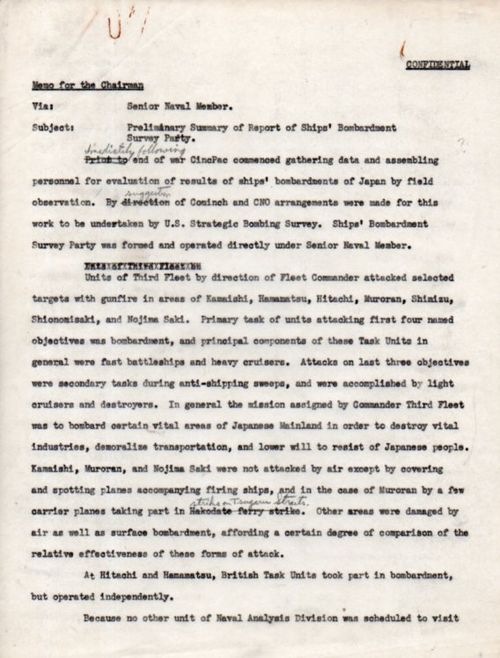
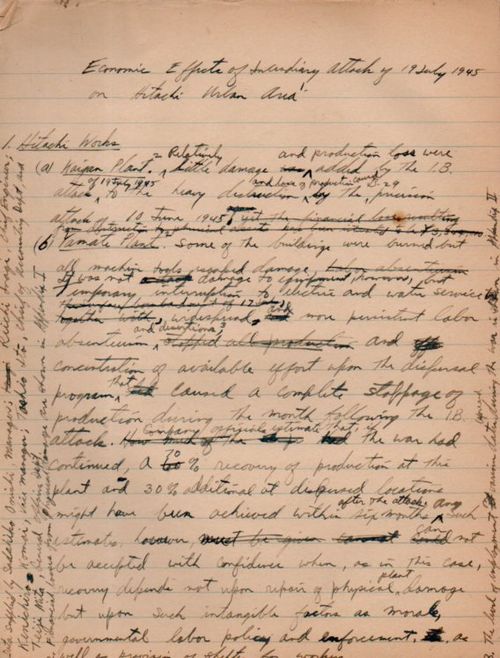

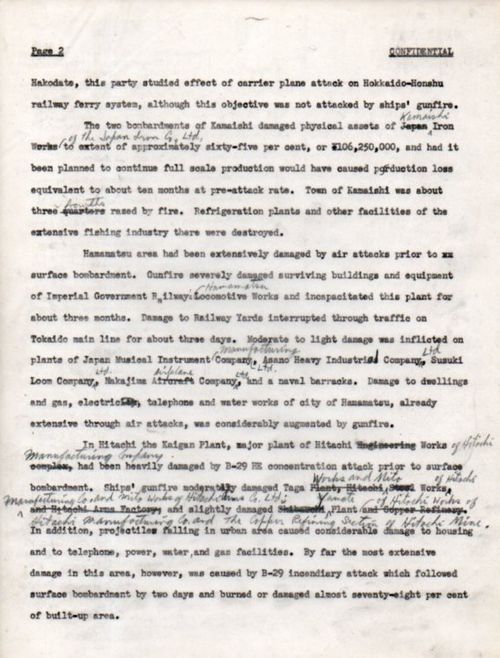
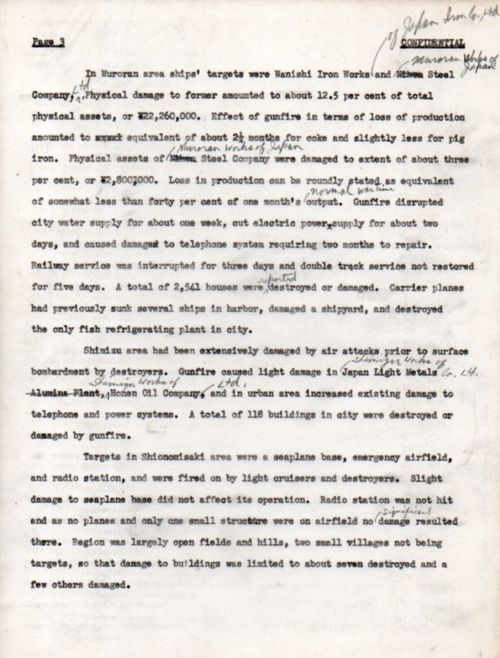
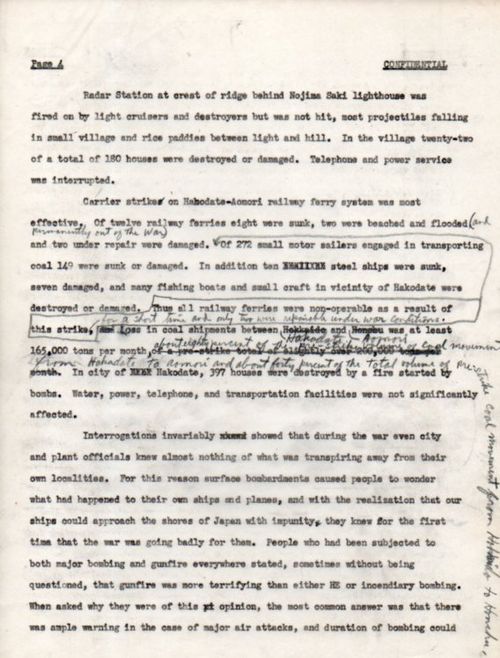
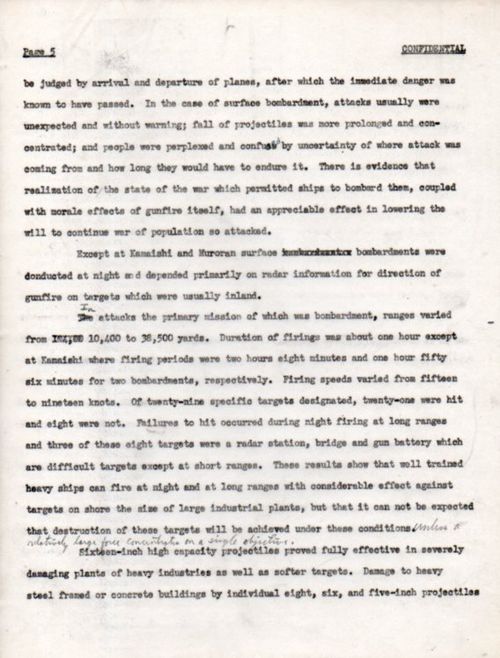
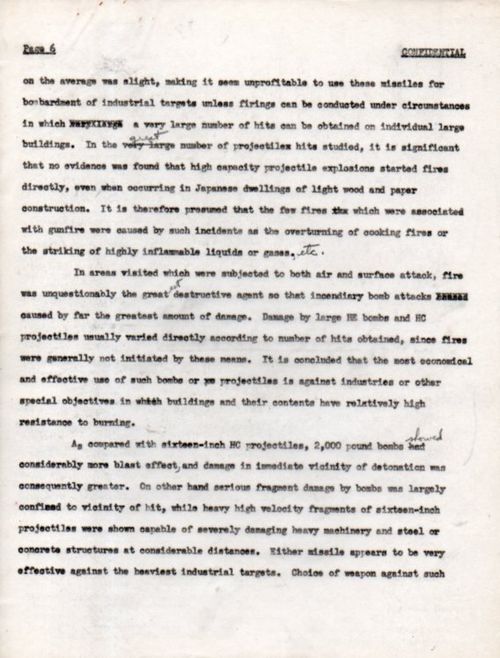
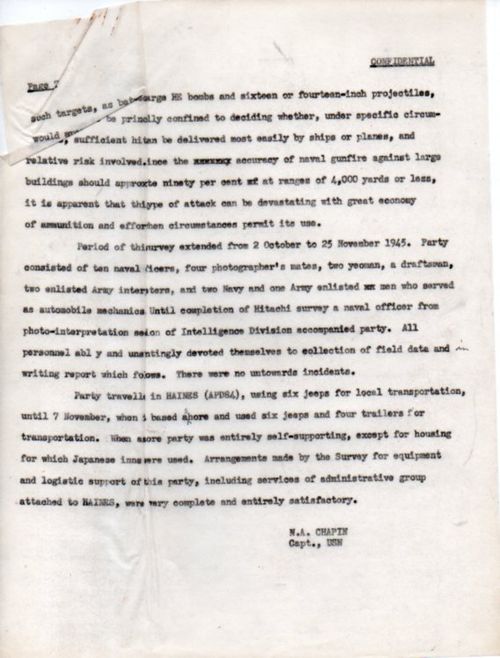
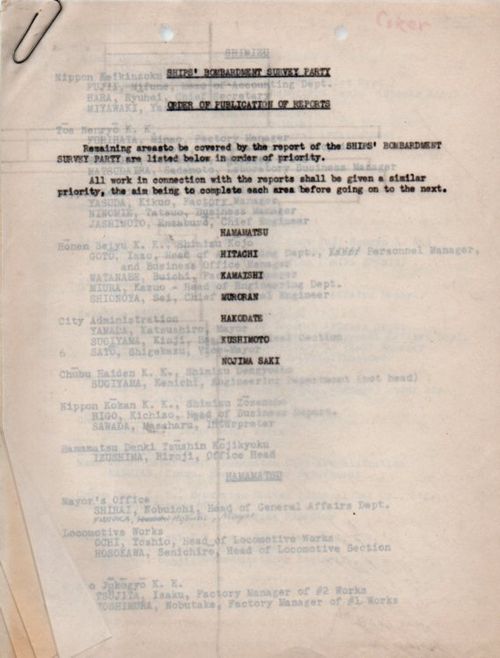
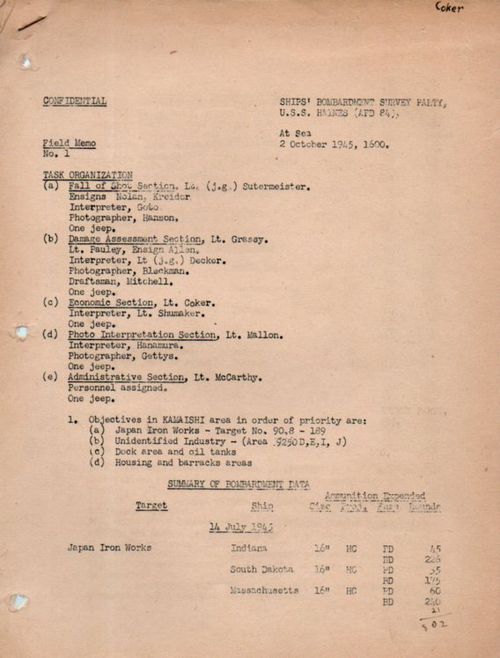
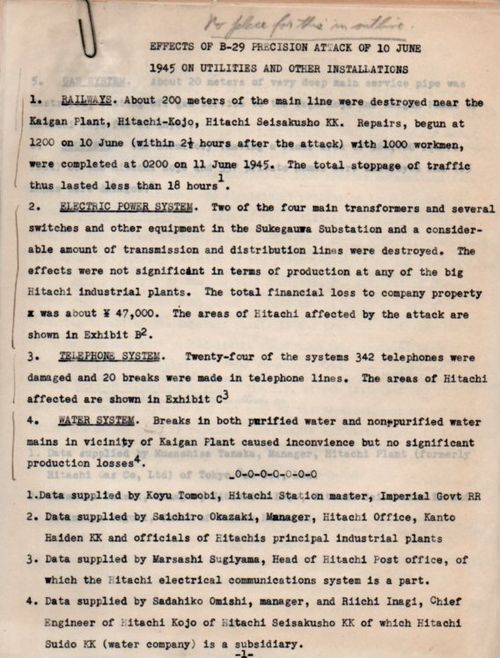


Comments